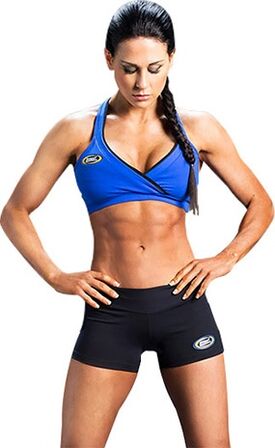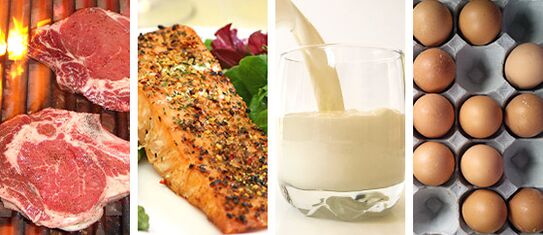

What is ketosis?
Basic Ketogenic Diet Options
- standard ketogenic diet– This is the simplest and most basic ketogenic diet. SCD does not imply a period of replenishment of carbohydrate stores as required by CCD and TKD. It is a linear diet characterized by a steady supply of ketogenic nutrients (moderate to high protein intake, high fat intake, and very low carbohydrate intake).
- cyclical ketogenic dietis a variation of the nutrisystem that involves short-term carbohydrates to replenish muscle glycogen stores after the body's reserves have been completely depleted. The length of time between carb loads will vary based on personal preference, training intensity, and goals.
- targeted ketogenic diet- This is the final version of the power system we are interested in. TKD is characterized by a short-term supply of carbohydrates during training. The goal of TKD is to flood the body with glucose to improve body function without long-term suppression of ketosis.

Which option should I choose?
- SKD. Ideal for people who lead a sedentary lifestyle and whose physical performance is not compromised when severely restricting carbohydrate intake. SKD would also be an excellent option for people who don’t train as hard and have higher insulin resistance.
- tKD. If you train your glutes a few times a week and find that your performance decreases due to long-term carb restriction, it may be worth considering short-term carb loading before or after training. Additionally, TKD would be a good option for people with more training experience who might benefit from a small carb increase but not a large carb load.
- TSKD. The Cycling Ketogenic Diet is often called the "most advanced" of all ketogenic diet regimens. CCD requires one to patiently go through a trial and error phase, during which time one finds the optimal time period between carb loads and determines the amount of carbs needed on load days. If you consider yourself an experienced athlete who trains actively throughout the week and you notice a decrease in performance even in the context of SCD or TKD, then consider a CCD. Maybe this option will help you get back to work as quickly as possible.
Create your own ketogenic diet
- Use the daily calorie calculator to determine your energy needs;
- Daily protein requirement 2 g/kg dry weight: 150 g per day
- Carbohydrate requirement 0. 2-0. 4 g/kg dry weight: 15-30 g per day (for further calculations we start with 30 g)
- Since 1 gram of protein and carbohydrates contains 4 calories, we have (150 + 30) x 4: 720 calories from protein and carbohydrates
- We know that this person should get 1280 calories (2000 - 720) from fat, and since 1 gram of fat contains 9 calories, he should eat approximately 142 (1280 divided by 9) grams of fat per day.
| squirrel | carbohydrate | Fat | |
|---|---|---|---|
| first meal | 50 grams | 10 grams | 48 grams |
| second meal | 50 grams | 10 grams | 47 grams |
| third meal | 50 grams | 10 grams | 47 grams |
| squirrel | carbohydrate | Fat | |
|---|---|---|---|
| first meal | 30g | 5 grams | 29 grams |
| second meal | 30g | 5 grams | 29 grams |
| third meal | 30g | 5 grams | 28 grams |
| fourth meal | 30g | 5 grams | 28 grams |
| fifth meal | 30g | 5 grams | 28 grams |
Choosing Ketogenic Diet Foods

- Animal protein (especially red meat)
- Eggs (whole or egg whites)
- Fatty dairy products such as cheese, cream, butter, etc.
- Oils, preferably vegetable oils, peanuts, flaxseeds, macadamia nuts, olives and some types of coconut
- Nuts and nut butters
- Fibrous vegetables, especially green vegetables, lettuce, broccoli, celery, etc.
Central control center planning
- Protein requirement 2g/kg dry weight: 150g/day
- For low insulin sensitivity we calculate based on an intake of 2-3 grams of carbohydrate per kilogram of dry weight
- With normal insulin sensitivity, we calculate carbohydrate intake at 4-5 grams per kilogram of dry weight
- For high insulin sensitivity we calculate carbohydrate intake at 6-7 grams per kilogram of dry weight
- Now, as before, we just calculate the remaining calories and divide by 9 to get the grams of fat we need to eat on a carb loading day
- Monday to Saturday: Nutrient intake must meet previously calculated SKD requirements
- Sunday (carb loading day, 2500 calories) – 150g protein/300g carbs/78g fat
TCD planning
- Protein requirement 2g/kg dry weight: 150g/day
- If insulin sensitivity is low, add 0. 5 g of carbohydrate per 1 kg of dry matter in the "close to training" meal
- To achieve normal insulin sensitivity, add 0. 75 g of carbohydrate per 1 kg of dry matter in "near-training" meals
- If you are highly insulin sensitive, add 1g of carbohydrate per 1kg of dry weight to your "close to training" meals
- Now we subtract the "extra" calories we get from carbohydrates and protein from our daily energy requirements and add the missing calories from fat (everything is the same as before).
| squirrel | carbohydrate | Fat | |
|---|---|---|---|
| First meal (before training) | 30g | 40g | 20 grams |
| Second meal (after training) | 30g | 35g | 20 grams |
| third meal | 30g | 10 grams | 30g |
| fourth meal | 30g | 10 grams | 30g |
| fifth meal | 30g | 10 grams | 30g |
TsKD and TKD Thin Tinctures

Thoughts on the role of saturated fat in the ketogenic diet
FAQ
question:Is it okay to include major sources of carbohydrates in a ketogenic diet menu? answer:Some followers of the ketogenic diet categorically believe that alkaline carbohydrate foods should be eliminated entirely. However, for larger people, they can eat more carbohydrates and still be in ketosis, and therefore may allow for "mistakes" in a diet of grains, cereals, fruits, and starchy vegetables. question:Can I eat more protein and less fat on a ketogenic diet? answer:Yes, but remember that eating too much protein will only cause increased gluconeogenesis in the liver, making glucose the primary fuel source again. question:Do I need to use ketone test strips to confirm that my body has entered ketosis? Should I worry if I have reached this state? answer:You shouldn't take the presence of ketones in your urine and the official state of "ketosis" too seriously. As long as you consume very few carbohydrates in your diet, you'll be using fat and ketones to meet the majority of your body's energy needs. question:Can artificial sweeteners and sugar substitutes be used while on the ketogenic diet? answer:In most cases, yes. But keep in mind that some sugar substitutes contain small amounts of fillers, such as maltodextrin and dextrose, and if you overdose on sweeteners, the levels of these fillers in your diet can increase to alarming levels. question:Is the ketogenic diet safe for people with high cholesterol? answer:Generally safe, especially if most of the fat comes from unsaturated sources. However, if you suffer from a chronic disease, it is recommended that you ask your doctor about this and only go on a ketogenic diet if he agrees. question:Should vegetable fiber be included in the total caloric intake of the diet? answer:Plant fibers are not listed as "net carbohydrates" on food labels. However, plant fiber, like any nutrient, contains calories. question:After a high carb meal (during carb loading), my stomach becomes bloated and I fall into a lethargic state. what should I do? answer:You can try increasing the frequency of your meals and distributing carbohydrate foods more evenly. Or try eating most of your carbs in the evening, after which you can finally relax and enter a state of passive rest. question:When I first tried the ketogenic diet, I felt out of place. this is OK? answer:Many people feel exhausted within a few weeks, especially if their previous diet consisted primarily of high-carbohydrate foods. However, if your performance doesn't return over time, try TCD or CDT to see if that helps resolve the problem.
















